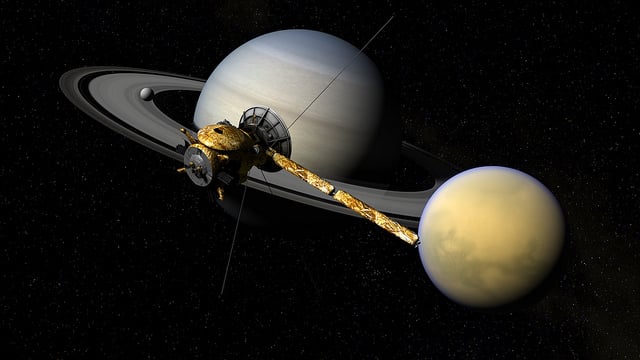The Cassini spacecraft has sent us some pretty amazing pictures of one of the most beautiful planets in our solar system, but it may help the hunt for a new planet in a rather unexpected way. Cassini’s orbit around Saturn experienced some unexpected disturbances, and with the right calculations, they could lead us to the discovery of a distant, massive planet way in the outer reaches of the solar system—if it exists.
“Planet Nine” is an explanation for the strange behavior of some Kuiper Belt objects in the outer reaches of our solar system favored by Konstantin Batygin and Mike Brown, planetary astronomers at the California Institute of Technology. The pair and their colleagues noticed that the orbits of these large, distant bodies lined up in a way that should be more than coincidence, but astronomers have never seen anything obvious to explain it. If Planet Nine exists, it’s incredibly far away from the sun (about 75 times as far as Pluto) and fairly large and massive at about ten times Earth’s mass and up to four times its size.
It’s the distance that would explain why we’ve never seen it. Our best techniques for spotting distant objects probably could see it, but looking so far away for something comparatively so small, we’d need to know where to look to have any hope of finding it. That’s where Cassini comes in. While orbiting Saturn, the little space probe (relatively little—it weighs 5,500 lbs.) experienced some orbital anomalies that couldn’t be accounted for by the tug of known objects in the solar system.
So, Agnès Fienga and her colleagues at the Côte d’Azur Observatory in France took a model of the solar system that they’ve been perfecting for more than ten years and modified it to see if this theorized planet could explain Cassini’s data. They found that everything lined up if Planet Nine was hiding out about 600 astronomical units (600 times the distance from the Earth to the Sun) away towards the constellation Cetus. Scientific American reports that Fienga herself isn’t completely convinced that the planet is out there, but it’s encouraging and should be helpful as the hunt to prove or disprove Planet Nine’s existence.
Batygin and Brown plan to examine the area predicted by Fienga’s team at the Subaru Telescope on Mauna Kea in Hawaii. It’s wise to be skeptical, as this isn’t the first time a distant planet has been theorized to explain oddities of our solar system, but the ongoing search is exciting nonetheless.
(via Universe Today, image via Kevin Gill on Flickr)
—The Mary Sue has a strict comment policy that forbids, but is not limited to, personal insults toward anyone, hate speech, and trolling.—
Follow The Mary Sue on Twitter, Facebook, Tumblr, Pinterest, & Google+.








